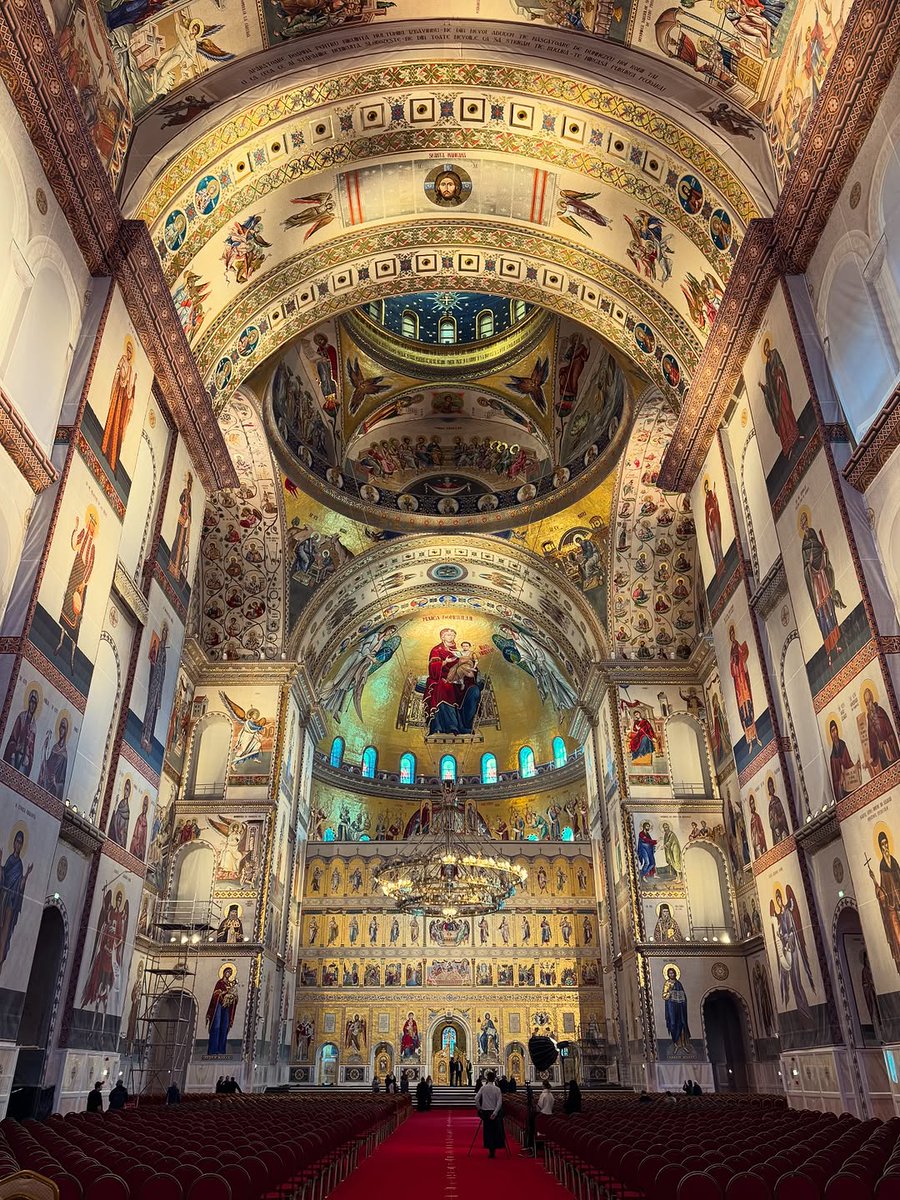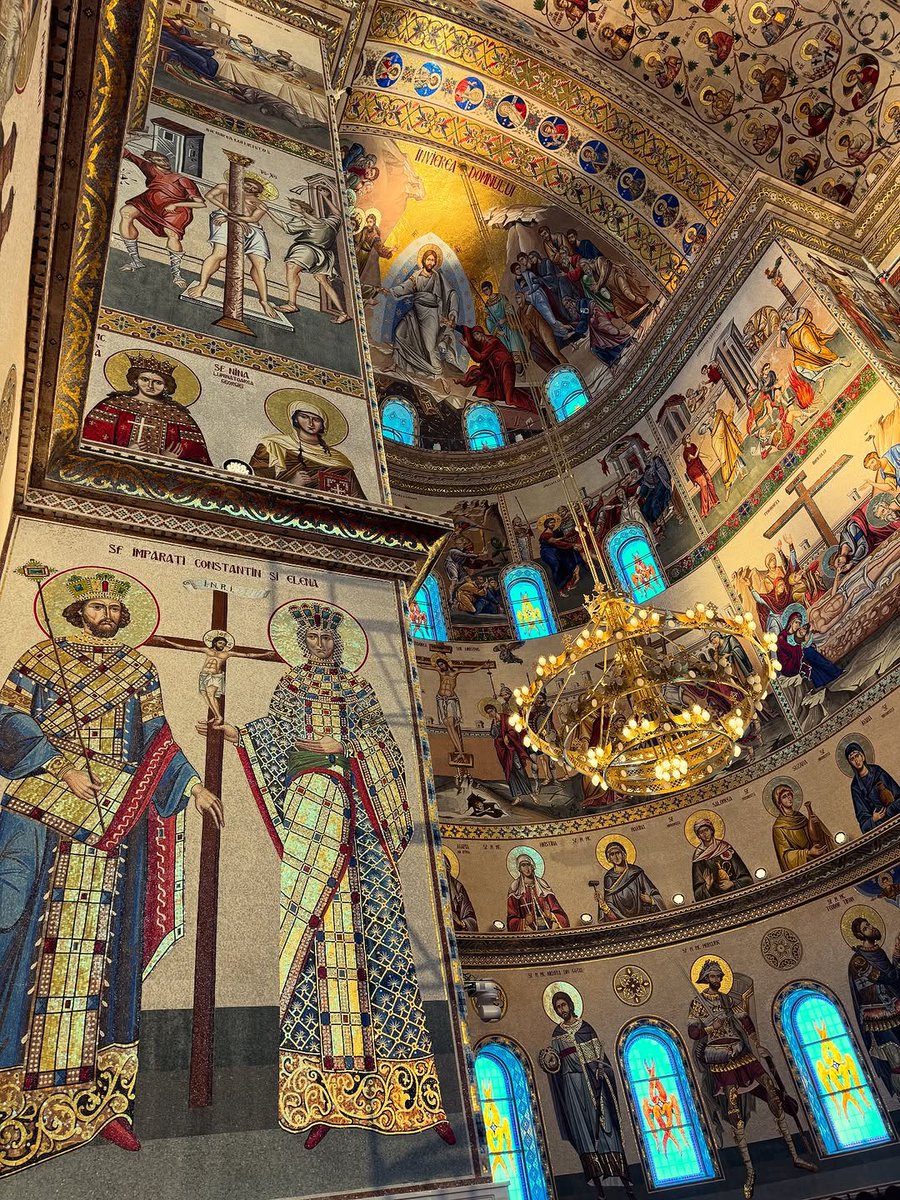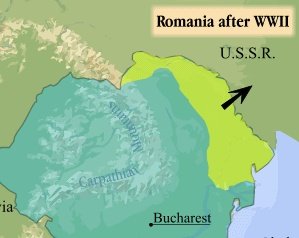🇷🇴 The Pitești Experiment: The Eastern Bloc's Most Brutal Prison
The experiment carried out in the Pitești Prison in Romania, aimed to torture and brainwash prisoners into absolute loyalty towards Romania's communist party
A thread ↓
The experiment carried out in the Pitești Prison in Romania, aimed to torture and brainwash prisoners into absolute loyalty towards Romania's communist party
A thread ↓

The experiment was carried out between 1949 and 1951
on up to 5,000 prisoners from which up to 200 died in the process
The experiment is often refered to as the largest and most intensive brainwashing torture program in the Eastern Bloc
on up to 5,000 prisoners from which up to 200 died in the process
The experiment is often refered to as the largest and most intensive brainwashing torture program in the Eastern Bloc

First Stage: "External Unmasking"
Each person in the experiment was first thoroughly interrogated and tortured to reveal personal details about their lives ("external unmasking")
Each person in the experiment was first thoroughly interrogated and tortured to reveal personal details about their lives ("external unmasking")

As a result, they had to disclose everything they were thought to have hidden in previous interrogations
To escape torture, many prisoners confessed to things they didn't actually do
To escape torture, many prisoners confessed to things they didn't actually do

Detainees, who were regularly and severely beaten, were forced to torture each other to break any past loyalties 

Different torture methods were used to break the prisoners
Guards would bring in buckets filled with shit and urine in which the heads of the prisoners were submerged almost to the point of death
The head was then raised, only to have his head pushed back into the sewage
Guards would bring in buckets filled with shit and urine in which the heads of the prisoners were submerged almost to the point of death
The head was then raised, only to have his head pushed back into the sewage

The prisoners' whole bodies were burned with cigarettes, their buttocks would begin to rot, and their skin fell off as though they suffered from leprosy 

Others were forced to swallow spoons of shit, and when they threw it back up, they were forced to eat their own vomit
Any prisoner who refused to become a torturer or did not beat former friends mercilessly was severely punished
Any prisoner who refused to become a torturer or did not beat former friends mercilessly was severely punished

Electrical shocks, hallucinogenic drugs, whippings, near starvation and fatal beatings were daily rituals in the prison of Pitesti
Besides physical violence, inmates undergoing "reeducation" had to work long hours doing humiliating tasks, like cleaning the floor with a rag held in their teeth
They were malnourished and kept in degrading and unsanitary conditions
They were malnourished and kept in degrading and unsanitary conditions

Not able to resist the physical and psychological violence, some prisoners tried to commit suicide by cutting their veins
Others ended their lives by throwing themselves through the opening between the stairways
Many died from beatings and torture
Others ended their lives by throwing themselves through the opening between the stairways
Many died from beatings and torture

Second Stage: "Internal Unmasking"
In the second phase, "internal unmasking," the tortured prisoners had to give the names of those who had treated them less harsh or more kindly while in detention
Those would then get tortured again
In the second phase, "internal unmasking," the tortured prisoners had to give the names of those who had treated them less harsh or more kindly while in detention
Those would then get tortured again

Guards forced inmates to attend Marxist political instruction sessions on topics like dialectical materialism and Joseph Stalin's History of Soviet Communism
These sessions were accompanied by violence and encouraged inmates to report each other for real or invented offenses
These sessions were accompanied by violence and encouraged inmates to report each other for real or invented offenses

Third Stage: "Public Moral Unmasking"
Public humiliation was also used, especially in the third stage
Inmates had to give up all their personal beliefs, loyalties, and values
Religious inmates had to insult religious symbols and sacred texts like the Bible
Public humiliation was also used, especially in the third stage
Inmates had to give up all their personal beliefs, loyalties, and values
Religious inmates had to insult religious symbols and sacred texts like the Bible

"When you said, ‘I still believe in God,’ in five minutes you were full of blood"
Roman Braga, survivor of the Pitesti Prison
Roman Braga, survivor of the Pitesti Prison

The experiment was stopped by the authorities themselves
Over 20 high ranking officials involved in the experiment faced death sentences which were carried out by a firing squad on 17 December, 1954
Involved members of the Securitate were given light sentences and freed after
Over 20 high ranking officials involved in the experiment faced death sentences which were carried out by a firing squad on 17 December, 1954
Involved members of the Securitate were given light sentences and freed after

Today, the former Pitesti Prison is a museum reminding people of the atrocities that happened during communist times
Around 10,000 people visit the museum every year
Around 10,000 people visit the museum every year

"Many of us died, many of us became mad, but in some of us the good triumphed"
George Calciu, survivor of the Pitesti Prison
Calciu giving a rare interview in 1988, he was released from prison due to pressure from supporters such as U.S. president Ronald Reagan
George Calciu, survivor of the Pitesti Prison
Calciu giving a rare interview in 1988, he was released from prison due to pressure from supporters such as U.S. president Ronald Reagan
• • •
Missing some Tweet in this thread? You can try to
force a refresh























